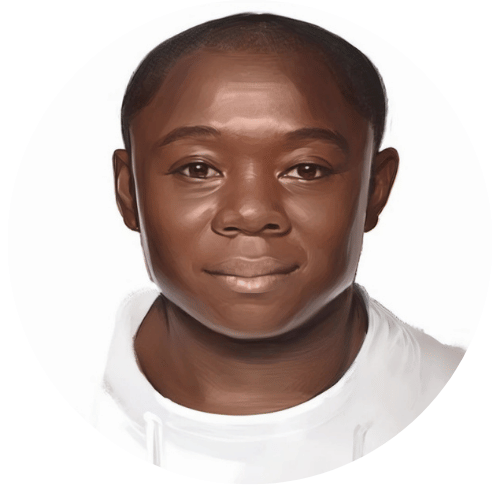NFT Dashboard Application Development.
Through a wide variety of mobile applications, we’ve developed a unique visual system.
- Client George Wallace
- Date 15 June 2022
- Services Web Application
- Budget $100000+
Hi, I’m Patrick Ngugi, a photographer based in Nairobi with a passion for storytelling that makes an impact. My work focuses on news and climate change photography—capturing the moments that matter, the stories that need to be told, and the realities that shape our world. Through my lens, I bring to light the human side of global challenges, whether it’s covering breaking news or documenting the effects of climate change on communities here in Kenya and beyond. I believe that a single image has the power to inform, inspire, and move people to action. Working with media outlets, NGOs, and other organizations, I aim to create visuals that resonate deeply and foster change. If you’re looking for powerful, story-driven photography, I’d love to explore how my work can help bring your vision to life. Feel free to take a look at my portfolio to see the world as I see it—or reach out if you’d like to connect!
I throw myself down among the tall grass by the stream as Ilie close to the earth.
I throw myself down among the tall grass by the stream as Ilie close to the earth.
Through a wide variety of mobile applications, we’ve developed a unique visual system.
There are always some stocks, which illusively scale lofty heights in a given time period. However, the good show doesn’t last for these overblown toxic stocks as their current price is not justified by their fundamental strength.
A strategy is a general plan to achieve one or more long-term. labore et dolore magna aliqua.
UI/UX Design, Art Direction, A design is a plan or specification for art. which illusively scale lofty heights.
User experience (UX) design is the process design teams use to create products that provide.
Toxic companies are usually characterized by huge debt loads and are vulnerable to external shocks. Accurately identifying such bloated stocks and getting rid of them at the right time can protect your portfolio.
Overpricing of these toxic stocks can be attributed to either an irrational enthusiasm surrounding them or some serious fundamental drawbacks. If you own such bubble stocks for an inordinate period of time, you are bound to see a massive erosion of wealth.
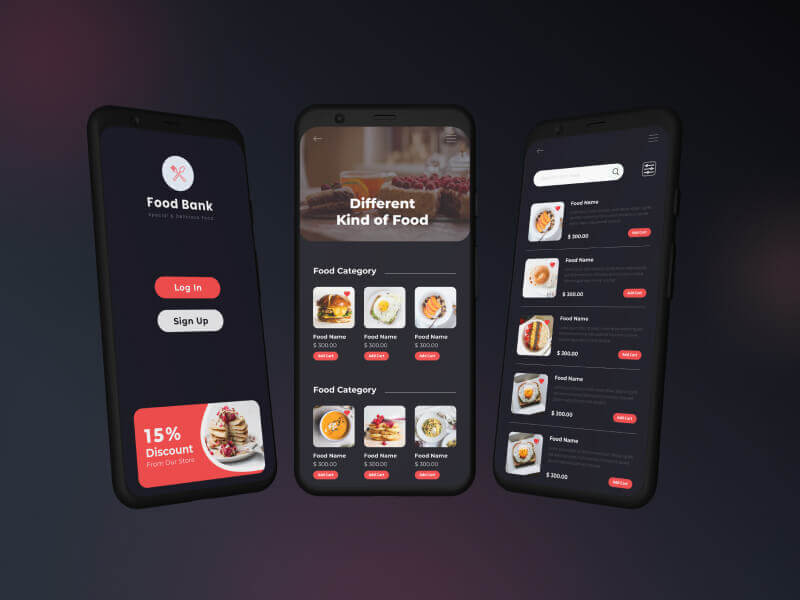

However, if you can precisely spot such toxic stocks, you may gain by resorting to an investing strategy called short selling. This strategy allows one to sell a stock first and then buy it when the price falls.
While short selling excels in bear markets, it typically loses money in bull markets.
So, just like identifying stocks with growth potential, pinpointing toxic stocks and offloading them at the right time is crucial to guard one’s portfolio from big losses or make profits by short selling them. Heska Corporation HSKA, Tandem Diabetes Care, Inc. TNDM, Credit Suisse Group CS,Zalando SE ZLNDY and Las Vegas Sands LVS are a few such toxic stocks.Screening Criteria
Here is a winning strategy that will help you to identify overhyped toxic stocks:
Most recent Debt/Equity Ratio greater than the median industry average: High debt/equity ratio implies high leverage. High leverage indicates a huge level of repayment that the company has to make in connection with the debt amount.
Through a wide variety of mobile applications.
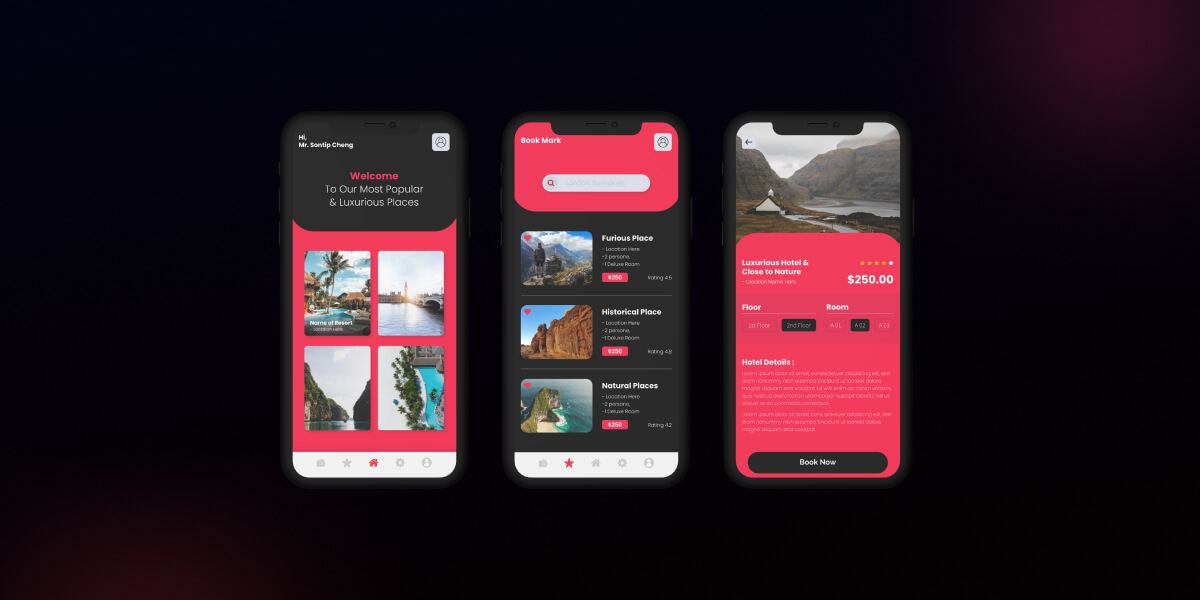
UI/UX Design, Art Direction, A design is a plan or specification for art viverra maecenas accumsan.

Through a wide variety of mobile applications, we’ve developed a unique visual system and strategy that can be applied across the spectrum of available applications.
Most recent Debt/Equity Ratio greater than the median industry average: High debt/equity ratio implies high leverage. High leverage indicates a huge level of repayment that the company has to make in connection with the debt amount.
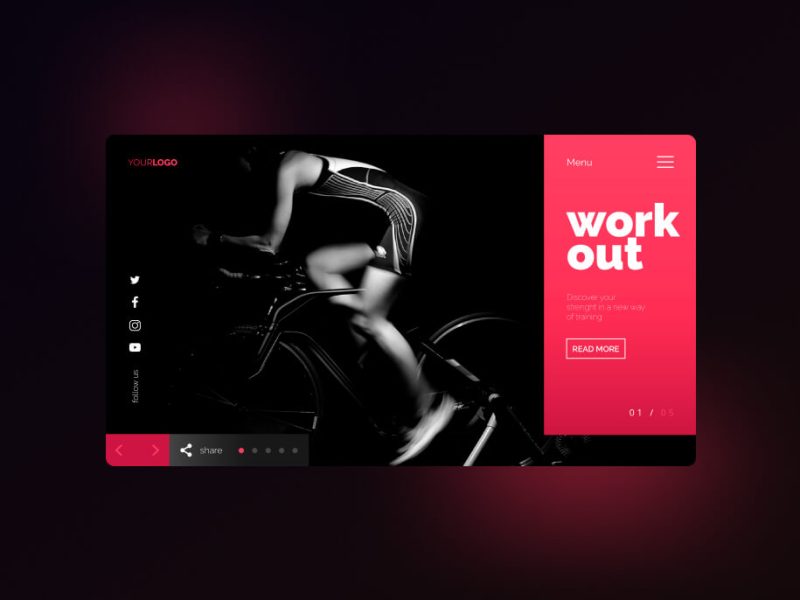
Through a wide variety of mobile applications, we’ve developed a unique visual system and strategy that can be applied across the spectrum of available applications.
A strategy is a general plan to achieve one or more long-term.
UI/UX Design, Art Direction, A design is a plan or specification for art.
Lorem ipsum dolor sit amet, consectetur adipiscing elit, sed do eiusmod tempor incididunt ut labore et dolore magna aliqua. Quis ipsum suspendisse ultrices gravida. Risus commod viverra maecenas accumsan lacus vel facilisis. ut labore et dolore magna aliqua.



There are always some stocks, which illusively scale lofty heights in a given time period. However, the good show doesn’t last for these overblown toxic stocks as their current price is not justified by their fundamental strength.
Toxic companies are usually characterized by huge debt loads and are vulnerable to external shocks. Accurately identifying such bloated stocks and getting rid of them at the right time can protect your portfolio.
Overpricing of these toxic stocks can be attributed to either an irrational enthusiasm surrounding them or some serious fundamental drawbacks. If you own such bubble stocks for an inordinate period of time, you are bound to see a massive erosion of wealth.
However, if you can precisely spot such toxic stocks, you may gain by resorting to an investing strategy called short selling. This strategy allows one to sell a stock first and then buy it when the price falls.
While short selling excels in bear markets, it typically loses money in bull markets.
So, just like identifying stocks with growth potential, pinpointing toxic stocks and offloading them at the right time is crucial to guard one’s portfolio from big losses or make profits by short selling them. Heska Corporation HSKA, Tandem Diabetes Care, Inc. TNDM, Credit Suisse Group CS,Zalando SE ZLNDY and Las Vegas Sands LVS are a few such toxic stocks.Screening Criteria
Here is a winning strategy that will help you to identify overhyped toxic stocks:

Most recent Debt/Equity Ratio greater than the median industry average: High debt/equity ratio implies high leverage. High leverage indicates a huge level of repayment that the company has to make in connection with the debt amount.
Through a wide variety of mobile applications, we’ve developed a unique visual system and strategy that can be applied across the spectrum of available applications.
A strategy is a general plan to achieve one or more long-term.
UI/UX Design, Art Direction, A design is a plan or specification for art.
Lorem ipsum dolor sit amet, consectetur adipiscing elit, sed do eiusmod tempor incididunt ut labore et dolore magna aliqua. Quis ipsum suspendisse ultrices gravida. Risus commod viverra maecenas accumsan lacus vel facilisis. ut labore et dolore magna aliqua.
There are always some stocks, which illusively scale lofty heights in a given time period. However, the good show doesn’t last for these overblown toxic stocks as their current price is not justified by their fundamental strength.
Toxic companies are usually characterized by huge debt loads and are vulnerable to external shocks. Accurately identifying such bloated stocks and getting rid of them at the right time can protect your portfolio.



Overpricing of these toxic stocks can be attributed to either an irrational enthusiasm surrounding them or some serious fundamental drawbacks. If you own such bubble stocks for an inordinate period of time, you are bound to see a massive erosion of wealth.
However, if you can precisely spot such toxic stocks, you may gain by resorting to an investing strategy called short selling. This strategy allows one to sell a stock first and then buy it when the price falls.
While short selling excels in bear markets, it typically loses money in bull markets.
So, just like identifying stocks with growth potential, pinpointing toxic stocks and offloading them at the right time is crucial to guard one’s portfolio from big losses or make profits by short selling them. Heska Corporation HSKA, Tandem Diabetes Care, Inc. TNDM, Credit Suisse Group CS,Zalando SE ZLNDY and Las Vegas Sands LVS are a few such toxic stocks.Screening Criteria
Here is a winning strategy that will help you to identify overhyped toxic stocks:

Most recent Debt/Equity Ratio greater than the median industry average: High debt/equity ratio implies high leverage. High leverage indicates a huge level of repayment that the company has to make in connection with the debt amount.

Through a wide variety of mobile applications, we’ve developed a unique visual system and strategy that can be applied across the spectrum of available applications.
A strategy is a general plan to achieve one or more long-term.
UI/UX Design, Art Direction, A design is a plan or specification for art.
Lorem ipsum dolor sit amet, consectetur adipiscing elit, sed do eiusmod tempor incididunt ut labore et dolore magna aliqua. Quis ipsum suspendisse ultrices gravida. Risus commod viverra maecenas accumsan lacus vel facilisis. ut labore et dolore magna aliqua.
There are always some stocks, which illusively scale lofty heights in a given time period. However, the good show doesn’t last for these overblown toxic stocks as their current price is not justified by their fundamental strength.
Toxic companies are usually characterized by huge debt loads and are vulnerable to external shocks. Accurately identifying such bloated stocks and getting rid of them at the right time can protect your portfolio.



Overpricing of these toxic stocks can be attributed to either an irrational enthusiasm surrounding them or some serious fundamental drawbacks. If you own such bubble stocks for an inordinate period of time, you are bound to see a massive erosion of wealth.
However, if you can precisely spot such toxic stocks, you may gain by resorting to an investing strategy called short selling. This strategy allows one to sell a stock first and then buy it when the price falls.
While short selling excels in bear markets, it typically loses money in bull markets.
So, just like identifying stocks with growth potential, pinpointing toxic stocks and offloading them at the right time is crucial to guard one’s portfolio from big losses or make profits by short selling them. Heska Corporation HSKA, Tandem Diabetes Care, Inc. TNDM, Credit Suisse Group CS,Zalando SE ZLNDY and Las Vegas Sands LVS are a few such toxic stocks.Screening Criteria
Here is a winning strategy that will help you to identify overhyped toxic stocks:

Most recent Debt/Equity Ratio greater than the median industry average: High debt/equity ratio implies high leverage. High leverage indicates a huge level of repayment that the company has to make in connection with the debt amount.
The training provided by universities in order to prepare people to work in various sectors of the economy or areas of culture.
Higher education is tertiary education leading to award of an academic degree. Higher education, also called post-secondary education.
Secondary education or post-primary education covers two phases on the International Standard Classification of Education scale.
Google’s hiring process is an important part of our culture. Googlers care deeply about their teams and the people who make them up.
A popular destination with a growing number of highly qualified homegrown graduates, it's true that securing a role in Malaysia isn't easy.
The India economy has grown strongly over recent years, having transformed itself from a producer and innovation-based economy.
Google’s hiring process is an important part of our culture. Googlers care deeply about their teams and the people who make them up.
A popular destination with a growing number of highly qualified homegrown graduates, it's true that securing a role in Malaysia isn't easy.
The India economy has grown strongly over recent years, having transformed itself from a producer and innovation-based economy.
The training provided by universities in order to prepare people to work in various sectors of the economy or areas of culture.
Higher education is tertiary education leading to award of an academic degree. Higher education, also called post-secondary education.
Secondary education or post-primary education covers two phases on the International Standard Classification of Education scale.
The education should be very interactual. Ut tincidunt est ac dolor aliquam sodales. Phasellus sed mauris hendrerit, laoreet sem in, lobortis mauris hendrerit ante.
The education should be very interactual. Ut tincidunt est ac dolor aliquam sodales. Phasellus sed mauris hendrerit, laoreet sem in, lobortis mauris hendrerit ante.
The education should be very interactual. Ut tincidunt est ac dolor aliquam sodales. Phasellus sed mauris hendrerit, laoreet sem in, lobortis mauris hendrerit ante.
The education should be very interactual. Ut tincidunt est ac dolor aliquam sodales. Phasellus sed mauris hendrerit, laoreet sem in, lobortis mauris hendrerit ante.
The education should be very interactual. Ut tincidunt est ac dolor aliquam sodales. Phasellus sed mauris hendrerit, laoreet sem in, lobortis mauris hendrerit ante.
The education should be very interactual. Ut tincidunt est ac dolor aliquam sodales. Phasellus sed mauris hendrerit, laoreet sem in, lobortis mauris hendrerit ante.
All the Lorem Ipsum generators on the Internet tend to repeat predefined chunks as necessary
1 Page with Elementor
Design Customization
Responsive Design
Content Upload
Design Customization
2 Plugins/Extensions
Multipage Elementor
Design Figma
MAintaine Design
Content Upload
Design With XD
8 Plugins/Extensions
All the Lorem Ipsum generators on the Internet tend to repeat predefined chunks as necessary
5 Page with Elementor
Design Customization
Responsive Design
Content Upload
Design Customization
5 Plugins/Extensions
Multipage Elementor
Design Figma
MAintaine Design
Content Upload
Design With XD
50 Plugins/Extensions
All the Lorem Ipsum generators on the Internet tend to repeat predefined chunks as necessary
10 Page with Elementor
Design Customization
Responsive Design
Content Upload
Design Customization
20 Plugins/Extensions
Multipage Elementor
Design Figma
MAintaine Design
Content Upload
Design With XD
100 Plugins/Extensions
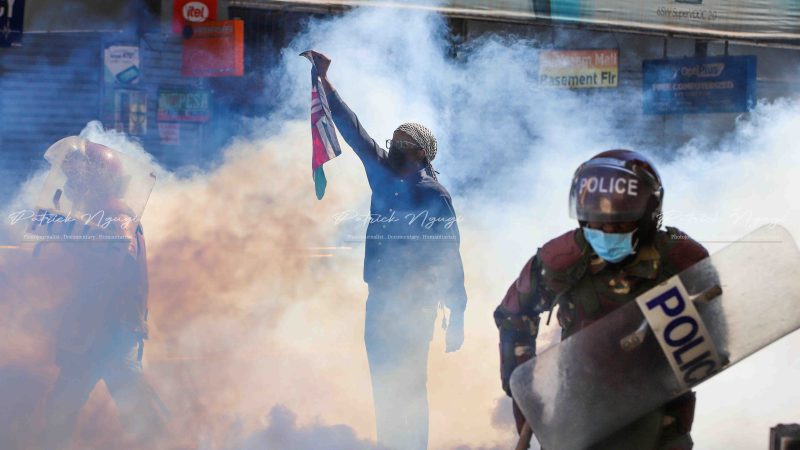
The Ethics of Protest Photography is a responsibility, not just a topic of conversation. As a photographer who documents resistance, I am divided between the desire to respect the people I photograph and the obligation to document the truth. I wonder myself, “Am I doing justice to the story?” each time I raise my camera. Am I defending people who oppose injustice?
Capturing impactful photos is only one aspect of protest photography. It has weight, power, and possible repercussions. Although it can strengthen motions, it can also put weaker people in danger. Ethical protest photography necessitates consideration, compassion, and accountability. After years of documenting downtown movements, I’ve come to realize that photography technique is just as important as subject matter.
The premise that pictures influence public opinion is the foundation of The Ethics of Protest Photography. One image of a mourning activist, a line of riot police, or a defiant demonstrator can start discussions, alter laws, and motivate action. Despite its strength, photography can be harmful if used improperly.
Narratives can be framed by photographers. The purpose of a movement can be distorted or amplified by a chosen shot. Making sure that our images capture the whole truth, not simply the most spectacular moments, is the goal of ethical protest photography. It entails telling stories with honesty.
The Morality of Protest Photographers must consider consent when taking pictures. Obtaining express consent is frequently challenging in fast-moving protests, but it doesn’t imply we should disregard it. I’ve developed the practice of determining my subjects’ level of comfort by occasionally nodding, gesturing, or, when practical, having a little discussion.
Some pictures, nevertheless, potentially endanger people. Photographs are frequently used to target, arrest, or harass protesters. I consider whether a picture could hurt someone before sharing it. If so, I either use silhouettes, blur faces, or don’t post the picture online.

The ethics of protest photography affect how we tell stories and go beyond the actual moment of shooting. If viewers are unaware of the previous instances of police harassment, a demonstrator tossing an object could appear violent. Despite its devastating appearance, a blazing barricade may be a defensive measure.
In addition to capturing the conflict, I try to capture the solidarity, tenacity, and compassion of these movements. Balance is key to ethical protest photography; it’s about capturing both the agony and the goal, the effort and the power.
Empathy is closely related to the ethics of protest photography. The pursuit of a powerful image can easily distract from the fact that actual people with genuine concerns, aspirations, and stakes are at the core of every demonstration.
I remind myself that I am a part of the story, not only an observer. I put down my camera if a moment seems too personal or intimate. The suffering of protesters is not a show, and they are not props. Respecting their tales instead of using them for dramatic effect is what ethical protest photography is all about.
The Ethics of Protest Photography continues in post-processing. Editing should enhance an image without distorting reality. Over-saturating flames, cropping out crucial elements, or adding misleading captions can manipulate perception.
I avoid altering my images in ways that misrepresent the truth. My goal is clarity, not exaggeration. Ethical protest photography is about presenting facts, not fabrications.
The Ethics of Protest Photography extends beyond the field. Once an image is taken, the next question is: Where does it go? The digital world amplifies both the impact and the risks of protest photography. A single viral image can be used for advocacy or for surveillance.
Before posting, I consider:
Ethical protest photography means being cautious with dissemination. I often watermark sensitive images, avoid geotagging locations, and share only with organizations that align with the cause. The goal is to uplift the movement, not to put people at risk.
The Morality of Protest There is more to photography than just technical proficiency. It’s a moral requirement. Respectfully capturing resistance entails respecting the worth of individuals who strive for change. It entails appreciating and sensibly utilizing the power of an image.
Truth has been given to us as photographers. Truth without morality, however, can be exploitative. Before taking a picture, editing it, and sharing it, we must consider whether we are elevating or jeopardizing voices. Is the most dramatic portion of the story being told, or is the entire story?
Ethical protest photography is not about perfection. It is about making conscious, empathetic choices. And in the end, it is about ensuring that our work contributes to justice rather than jeopardizing those who stand for it.
To better understand how ethical considerations impact modern journalism and photography, read this insightful analysis by the Committee to Protect Journalists.
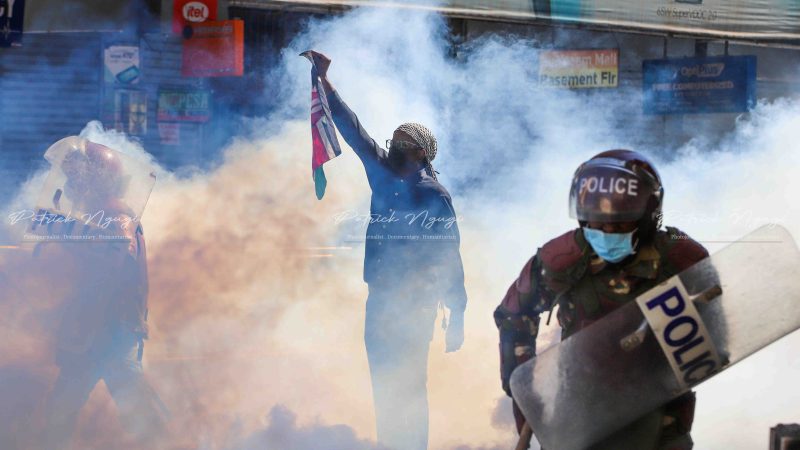
The Protests in 2024 were not just another chapter in a long history of civil unrest, they were moments frozen in time, each frame carrying the weight of hope, anger, and the human spirit. As a photographer, every click of the shutter was a decision, a heartbeat in the ongoing struggle for justice. The raw intensity of the protests, with their mix of violence, passion, and collective action, was something I had never fully anticipated when I first grabbed my camera and entered the fray.
I remember the first day clearly clear skies, with the streets filled with the hum of a crowd growing steadily larger. But there was an undercurrent of something more. The tension was highly noticeable. You could feel it in the air, an electricity that crackled just beneath the surface. The Protests in 2024 had begun peacefully, but everyone around me knew something monumental was at stake. Kenyans were ready to march for change, and they were willing to risk everything to make their voices heard.
As a photographer, I was there to document it, but deep inside, I was also a witness to history in the making.
As the day wore on, the atmosphere began to change. From downtown to uptown. River road to to Koinange street. The peaceful chants of the young people grew louder, the urgency to march to parliament grounds, more pronounced. A single tear rolled down the cheek of a young man beside me, his fist clenched in a symbol of defiance. There was a growing sense of fear, fear of the unknown, fear of what might come next. Fear of being just a Name on IPOA list documenting Police Brutality. But there was also a feeling of unity, a collective strength that seemed to come alive as the crowd surged forward, demanding answers. The Protests in 2024 were no longer just a gathering; they had become a movement, an undeniable force of nature. A movement that could not be stopped by the outnumbered GSU Police Members, who were ready to strike anyone who crossed their line.
But with the movement came violence. As the protests escalated, so did the response from authorities. The police, in full riot gear, were moving quickly to contain the crowds. That’s when the chaos erupted; flashbangs, tear gas, and the sounds of screams blending with the roar of the crowd. Their Water Canons Speeding past protesters drenching them with pink coloured water. Protesters continued to Pish the GSU officers back.
It was a moment where everything seemed to happen at once. My instincts as a photographer kicked in. I found myself crouched behind a barricade, snapping images of the clash that was unfolding in front of me.
Here’s a rewritten version of your paragraph to match the image of the injured boy being carried during the protest:
The streets of Nairobi were surreal; an overwhelming rush of sound, urgency, and chaos. The protests had escalated beyond a march; they had become a battlefield. In the midst of the turmoil, I saw the human cost of resistance. A young man, his green jacket smeared with blood, was being carried by frantic hands. His face twisted in agony, his body limp, his jeans soaked in red. The determination in the eyes of those holding him spoke volumes; fear, anger, and desperation fused into one moment. I raised my camera, knowing this wasn’t just about him. His suffering was a testament to everyone who had put their bodies on the line for change. Through my lens, I hoped his story would reach those who would never step onto these streets, never feel the weight of this fight firsthand.
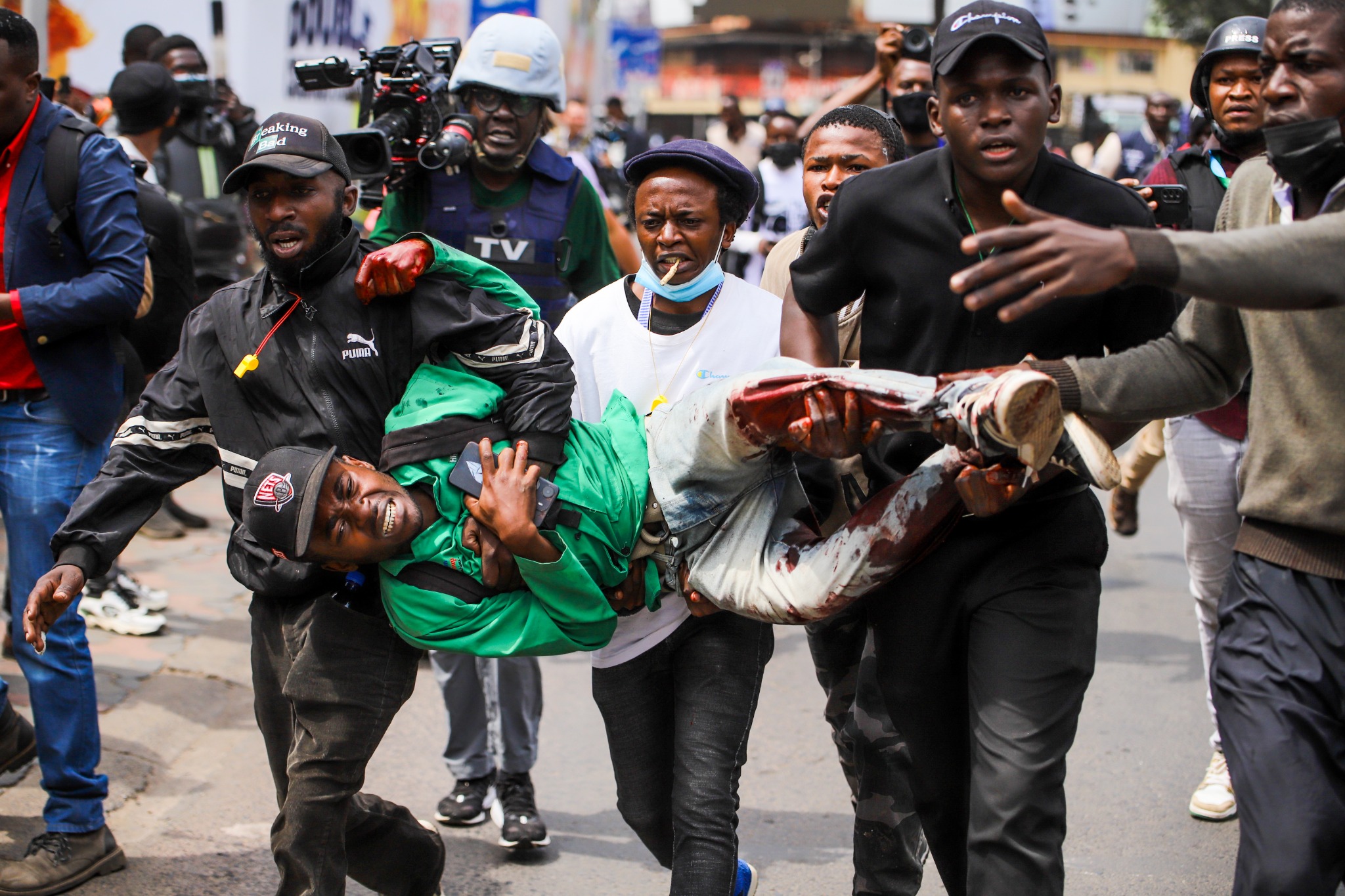
In the aftermath of the chaos, I continued to document the aftermath—people helping each other, bloodied faces, the faint smell of smoke still in the air. It was in these quiet moments that the real story of the Protests in 2024 emerged. The wounded were not just victims; they were also survivors. The resilience of the human spirit was present in every photo I took, each one showing a moment of struggle, of defiance, and of hope.
The defining moment of the protest came when tensions escalated outside the gates of Parliament in Nairobi. A police officer, armed and masked, took position behind a fence, aiming his weapon at protesters attempting to breach the compound. Just beyond him, a military truck burned, thick black smoke billowing into the sky—a stark symbol of the unrest. The air crackled with urgency, the lines between authority and resistance drawn sharply. I raised my camera, capturing the raw intensity of a city at a breaking point, where every action carried the weight of defiance and consequence.
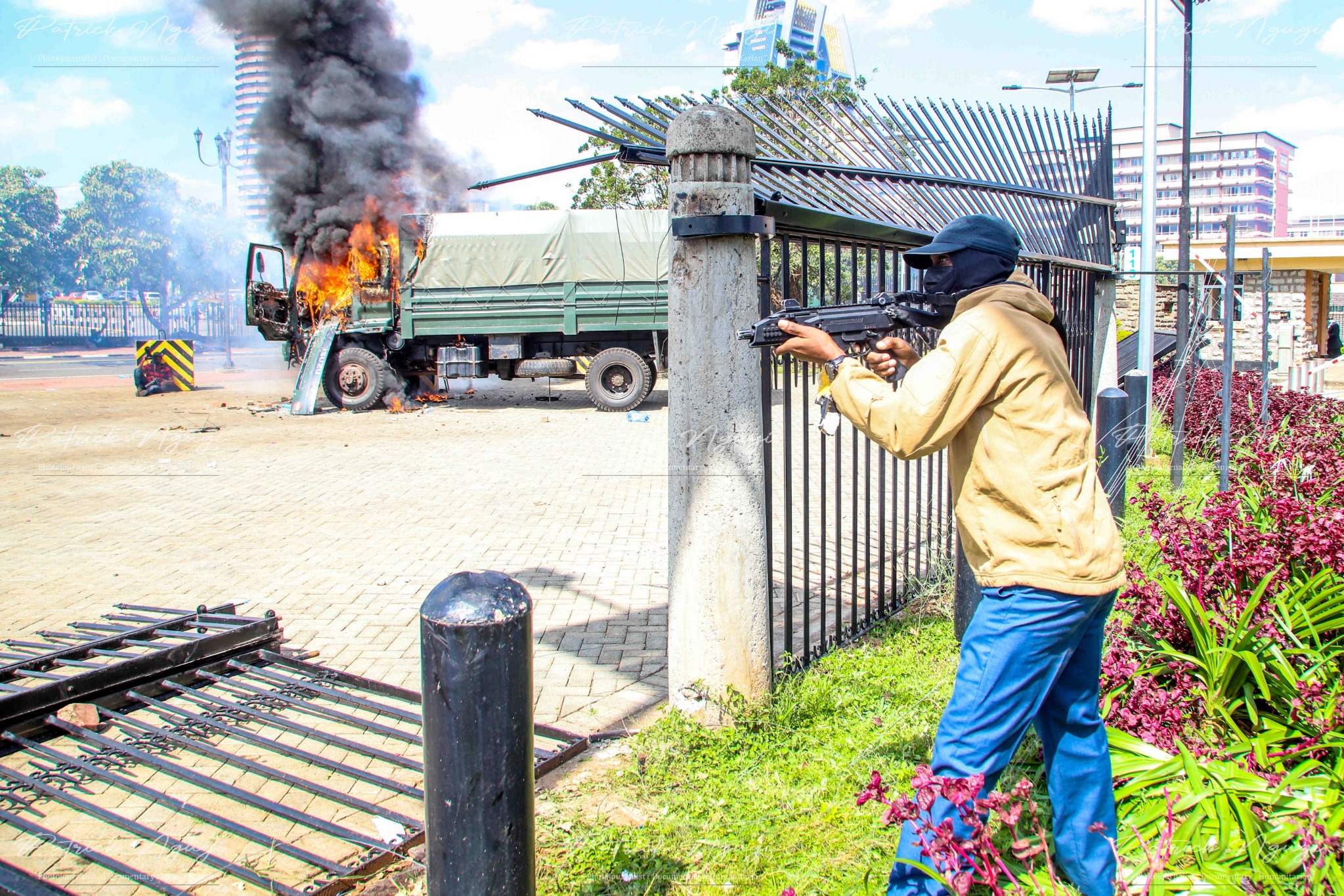
The Protests in Kenya were not just about the images I captured; they were about the people. They were about the stories of individuals who came together to fight for something bigger than themselves. Through the lens of my camera, I was able to see not just the external turmoil but also the internal strength that drove the movement forward.
In many ways, the photos I took of the Protests of the day felt like a reflection of my own emotional journey. As I navigated each and every street, I felt my own sense of fear, anger, and hope intertwining with those around me. What began as an assignment to document a social arrest in the city, became something much deeper; an opportunity to be part of a larger story, to witness the raw, unfiltered reality of Kenyans fighting for their future.
As I look back at the images from the Protests, I see not just the physical scars of the struggle among Kenyans but the emotional ones as well. Every protester, every face, every tear captured on my card is a reminder of the humanity behind the headlines.
The true story of these protests lies not in the headlines, but in the eyes of those who stood and fought, who bled, Injured, and hoped. I will carry these images with me, not just as a photographer, but as a Kenyan being who witnessed history unfold, frame by frame.
In the end, the Protests in Kenya were not just a fleeting moment. They were a testament to the power of the younger Generation in Kenya, a reminder that, in the face of adversity, poor governance and rampant corruption, we are capable of incredible things. And as a photographer, I am grateful to have been there to witness and capture it all.
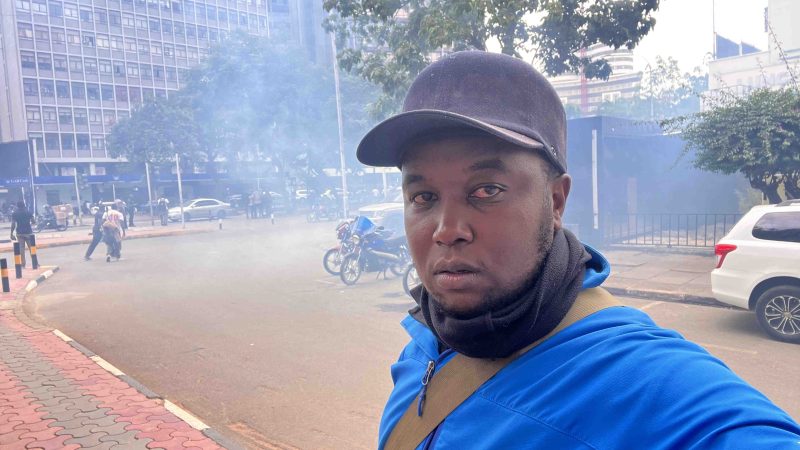
The risks of covering protests as a photographer in Kenya are real, raw, and relentless. With every shutter click, you expose yourself to dangers that lurk within the chaos of the streets. As a photographer, you are both an observer and a potential target, caught between angry demonstrators, ruthless police officers, and unpredictable circumstances.
I remember the first time I covered a protest in Nairobi. The air was thick with teargas, my eyes burned, and my camera lens fogged up from the sting of chemicals. Protesters ran past me, their voices hoarse from chanting. I stood my ground, adjusting my camera settings, my heart pounding like a war drum. In that moment, I realized that the risks of covering protests as a photographer in Kenya were not just theoretical—they were brutally real.
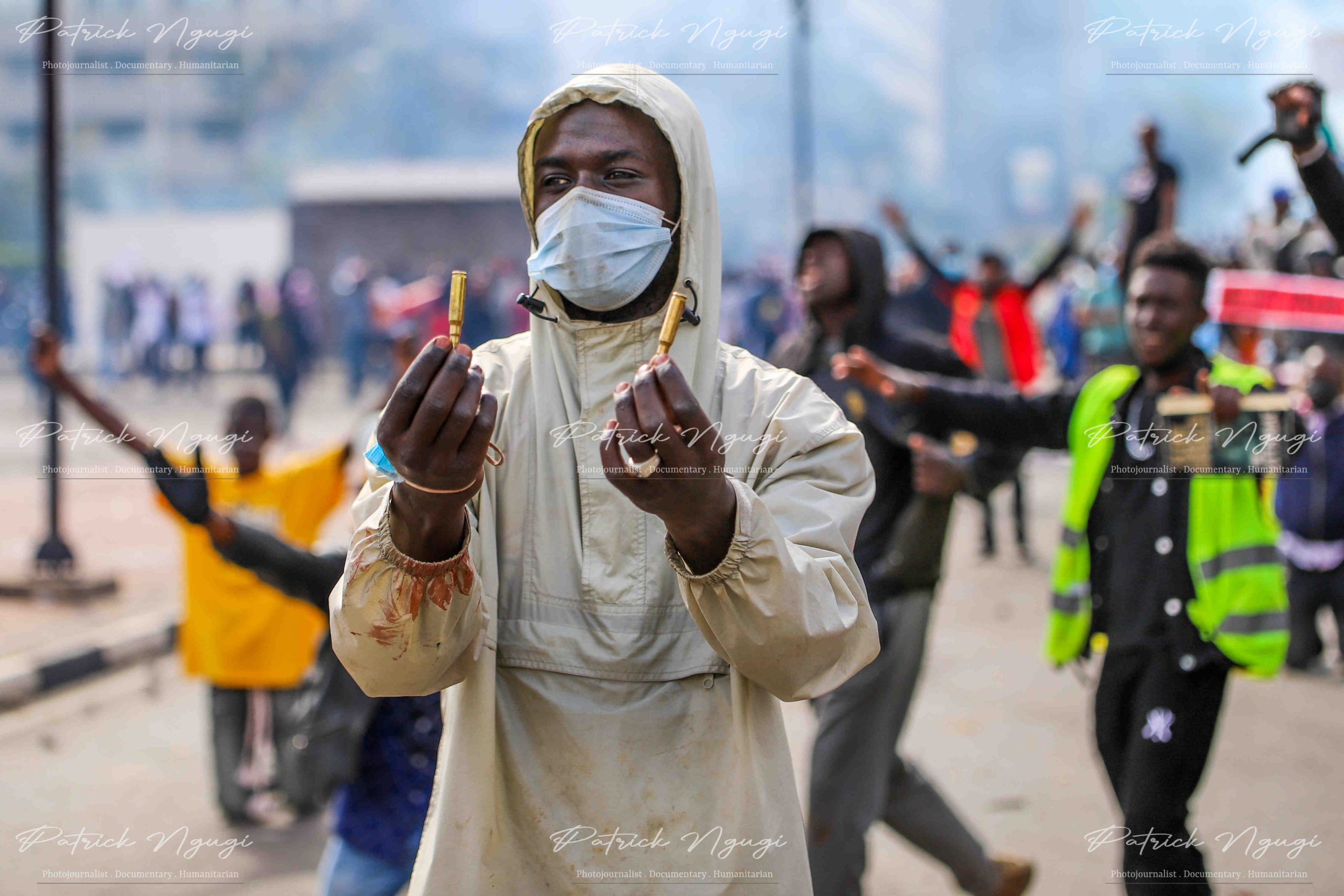
The risks of covering protests as a photographer in Kenya are largely shaped by the unpredictable nature of law enforcement. Police officers see cameras as weapons that expose their brutality to the world. Many photographers, including myself, have faced harassment, arrest, and even physical assault while doing our jobs.
One of my colleagues, James, was documenting a peaceful demonstration in Kisumu when he was suddenly surrounded by officers. Without warning, they grabbed his camera, smashed it to the ground, and dragged him away. He spent two nights in a police cell, accused of inciting violence—his only crime was documenting the truth.
The risks of covering protests as a photographer in Kenya extend beyond personal harm. Your camera gear is constantly at risk of damage or theft. When a protest turns violent, stones, tear gas canisters, and rubber bullets can strike your equipment.
I once lost a Nikon D750 when a police officer deliberately hit me with his baton, making me drop my camera onto the hard asphalt. The body cracked, the lens shattered, and my ability to document the moment was lost in an instant. There was no way to claim damages—just another occupational hazard.
As a photographer, you must remain neutral, but in the heat of protests, neutrality does not exist. The risks of covering protests as a photographer in Kenya include being perceived as biased by either side. Protesters may think you are working for the government; authorities may see you as an agitator. Either way, you are never safe.
During the 2024 anti-tax protests in Nairobi, I was photographing a group of youths who had barricaded a street with burning tires. Suddenly, a group of plainclothes officers stormed in, dispersing the protesters. One of them pointed at me and shouted, “Huyo ni mmoja wao!” (“He’s one of them!”). Within seconds, I was running for my life, my camera swinging against my chest. That day, I learned that even with a press badge, no one is untouchable.
The risks of covering protests as a photographer in Kenya are not just physical—they are emotional. Witnessing violence, suffering, and injustice day after day takes a toll on mental health.
I have photographed families mourning their loved ones, bodies lying in pools of blood, and children crying in fear as tear gas fills the air. The nightmares come uninvited, the memories refuse to fade. Some photographers turn to alcohol, others quit the profession altogether. The burden of documenting history can be overwhelming.
Despite the risks of covering protests as a photographer in Kenya, many of us continue to do it because storytelling is our calling. If you are venturing into this dangerous yet essential work, here are a few survival tips:
Despite the risks of covering protests as a photographer in Kenya, we press on. We do it for truth, for justice, for the people whose voices would otherwise be silenced. Every powerful image we capture is a testament to resilience, a weapon against oppression.
Even as the threats loom large, we hold our cameras like shields, ready to document history as it unfolds. Because if we don’t, who will?
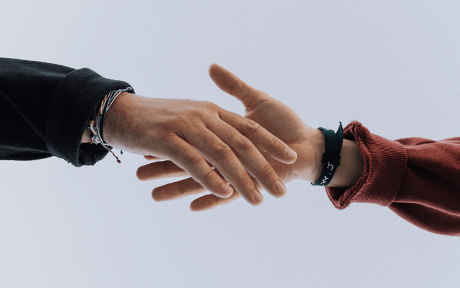
I am available for freelance work. Connect with me via and call in to my account.
Phone: +01234567890 Email: admin@example.com